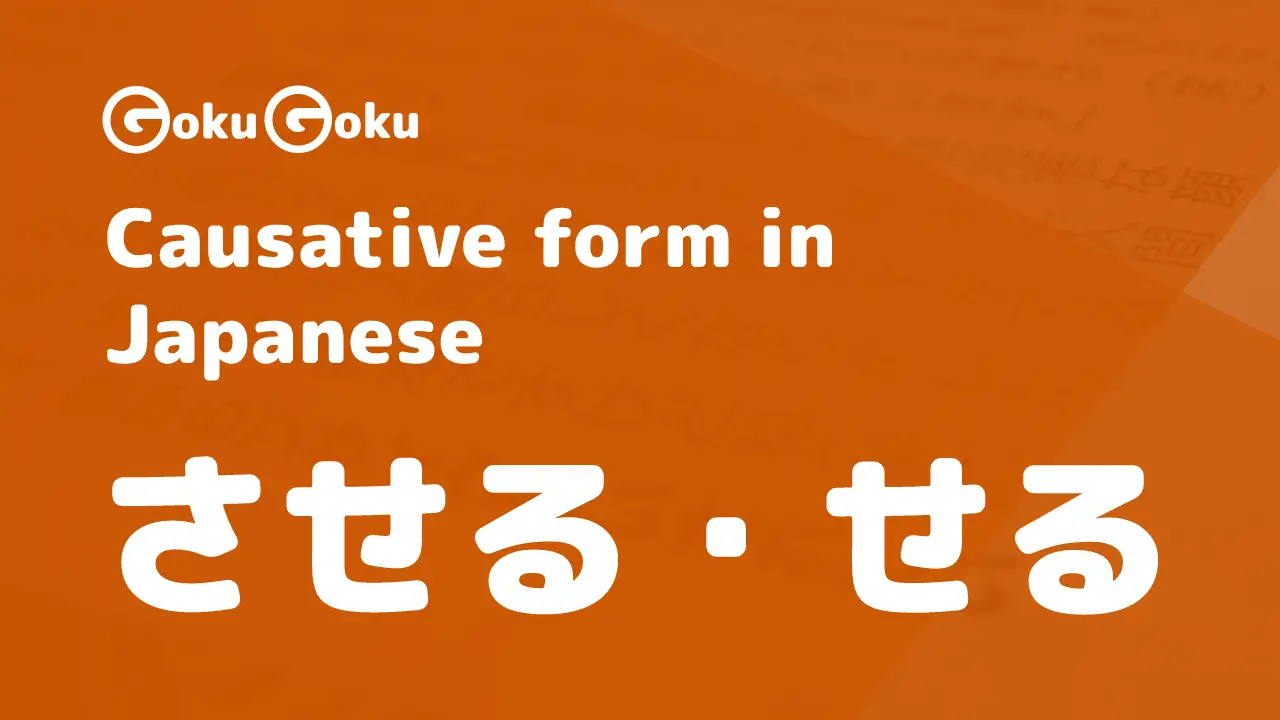Complete introduction to Particles in Japanese
Anna Baffa Volpe
Get in touch with meToday we are introducing a part of the Japanese grammar that is fundamental to analyse and understand a text: the Particles.
Particles in Japanese language are called joshi 助詞:
- 助 means
help,aid - 詞 represents the particle
They are also called postpositions because, unlike prepositions, they follow the noun or the element they are modifying
What are Particles
A particle in Japanese is a term that does not have a meaning in itself (like a noun or verb) but it's very important because it is necessary to specify the meaning of the sentence and the relationships among the various parts of the sentence.
Let's have a look at some simple examples:
ロンドンへ
To London
A simply expression where London represents the noun and へ (read e) the particle that indicates directions and destinations.
友達と
With friends
The noun in this case is 友達, friend or friends, and the particle と (to) used to indicate the preposition with or together with.
Particles are a particular and specific concept in Japanese language, and do not exist in many other languages, in particular Western languages
In this post, we are going through the commonly used particles in the language, in the daily conversation, their peculiarities and their use.
は
The first particle we generally learn is は (ha, which is read wa) representing the subject/theme of the sentence.

It is often used in conjunction with the verb 'be' or copula だ da.
He is an athlete.
The concept expressed is as far as he is concerned or concerning him, but these expressions are not usually translated literally
は can be replaced by the particle も (mo) which we translate also, too.
I'm also an athlete.
The particle は is used also to indicate the object or emphasise other parts of the sentence such as place and time expressions.
公園には誰もいない。
There is nobody in the park.
には as we can see, goes to emphasize the place, in this case expressed by the park.
も
As we have just seen, the particle も (mo) meaning also, in addition, as well, can be used alone as a particle or combined with others.
ジョンはアメリカ人です。リンダもアメリカ人です。
John is American, Linda is American too.
We can connect the two sentences as the exemple:
Both John and Linda are American.
が
が ga as particle is associated with the subject of the sentence.
The concept of subject is particular and different in the various languages. Consider that very often what we consider subject in Japanese is omitted.
As you can read in the various sentences and examples in this post, the subject is often not expressed.
Japanese verb conjugations are independent of person, number and gender
We often use the first person in the translations, but since the subject is not being specified, you can also use the second or third person, at the singular or plural form.
The situation and the context are fundamental to understand the meaning and to make an accurate translation of the sentence.
が is a particle that emphasises the element it refers to.

友達が道路を渡るのを見た。
I saw a friend crossing the street.
In the relative clauses, the particle が is used to indicate the subject.
友達が書いてくれた手紙。
The letter that a friend wrote to me.
雨が降っているので出かけない。
I won't go out because it's raining.
The meaning is considering the fact that it's raining, I won't go out.
Children love sweets.
The verbs to like, to love have a particular construction with the use of the two particles は and が: subject + は + the thing liked + が + 好きだ
We find が with the interrogative pronouns:
- だれが
Who?(confidential) - どなたが
Who?(polite way to ask) - 何が
What? - どれが
Which? - どこが
Where?
何が始まるの?
What does it start?
どこが痛いですか。
Where does it hurt?
の
の (no) expresses what we call the genitive case and emphasises the relationship between the term preceding and the term following it.
A book of history
リンダの弟
Linda's younger brother
Possessive adjectives are expressed using the particle の
- 私 の バッグ
my bag - 彼女 の 名前
her name - 私達 の 学校
our school

を
を o follows a noun representing the object in the sentence with a transitive verb and answers the questions: who?, what?.
本を読む。
I read a book.
What are intransitive verbs in many other foreign languages are instead transitive in Japanese, so the translation could be a little bit different
For example, the verbs of motion 歩く (to walk), 走る (to run) or 出る (to go out) carry the particle を and are considered transitive verbs in Japanese.
道を歩く。
I walk down the street.
公園を走る。
I run in the park.

家を出る。
I get out of home.
バスを降りる。
I get off the bus.
に
The particle に ni has several uses and meanings. Let's have a look at the main ones:
- Expression of time, when?. It expresses the
timeat which an action is performed
The lesson starts at 8 a.m.
午後一時に食事する。
We have lunch at 1 p.m.
- To express
place, where?. に is used particularly with what we call verbs of existence, ある and いる that we translate both as to be. Living things get いる (iru), and non-living things get ある (aru)
エフェル塔はどこにありますか。パリにあります。
Where is the Eiffel tower? It's in Paris.
公園に子供がいます。
There are children in the park.
犬もいます。
There is also a dog.
花もあります。
There are also flowers.
東京に行く。
Get to Tokyo
どこに行くの?
Where are you going?
- に also indicates the person to whom one has given something or towards whom a person has performed the action.
友達に電話する。
We phone to our friends.
先生に質問する。
I make a question to the teacher.
先生に褒められた。
I was praised by the teacher.
から-まで
The combination of particles から-まで expresses From (start point) ... to (finish point) in term of time and distance.
ロンドンから
From London
ロンドンからヨークまで
From London to York

大阪から京都まで
From Osaka to Kyoto
家から学校まで歩いて15分かかる。
From home to school it takes 15 minutes walking.
どこから from where, どこまで to where
The most common way to ask someone in Japanese where they are from is with a sentence containing から.
どちらからですか。
Where are you from?
The adverb that translates where is どこ, but using only どこ in this expression would be too direct and not very kind.
It is preferred to use another form どちら which is more discreet and polite.
月曜日から金曜日まで
from Monday to Friday
へ
As we have seen above, the particle へ (he) is read e and has several uses.
Just like the particle に (ni), へ (e) is used to indicate destination or direction. They are translated as to in English and are often interchangeable.
日本へようこそ!
Welcome to Japan!

外へ出る。
I go outside.
封筒へ入れる。
Put (something) into an envelope.
へ is also used as a term to which we turn our actions.
お母さんへプレゼントしてきた。
I gave my mother a present.
Also in this case it can be replaced by に.
お母さんにプレゼントしてきた。
I gave my mother a present.
で
Among the various uses the particle で (de) has, we find the place where an action takes place.
図書館で勉強する。
I study at the library.
郵便局で働く。
I work at the Post Office.
The means by which an action is completed. It could be a means of transport we use to move or a tool we use to do something.
I get back home by train.
ナイフで野菜を切る。
I cut vegetables with a knife.
コンピューターで出来ること。
Things you can do using the computer.

で used also to say in what language
- 英語で
in English - フランス語で
in French
と
The particle と (to) is used to connect two nouns in a sentence: we translate it as and. It cannot be used to connect phrases or clauses in the sentence.
僕と君
Me and you
コーヒーとクッキー
Coffee and cookies
と can also be used to say with or together with.
友達と出る。
I go out with some friends.
クラスメートと食事してきた。
I had lunch with my classmates.

We have a sentence that uses に (ni) and と (to) and the meaning has a slight difference:
- With に the direction of the action is one-way, from a person to another
- With と we have an action shared by the persons, a mutual communication or we can say two-way
That's it! Now you have a more clear understanding of what a particle is and how they work. You also know the most frequent and used particles in the Japanese Language. ご苦労様!







